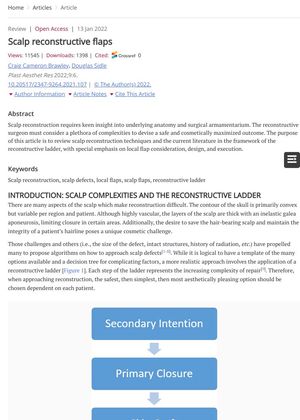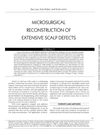Scalp Reconstructive Flaps
January 2022
in “
Plastic and Aesthetic Research
”

TLDR Choose the simplest, most fitting scalp reconstruction method for each patient's unique needs.
The document reviews various techniques for scalp reconstruction, emphasizing the complexity of the scalp and the need for a patient-specific approach. It suggests a reconstructive ladder approach, where the simplest and most aesthetically pleasing option is chosen based on each patient's situation. Techniques include secondary intention, primary closure, skin grafting, biomaterials, and local and regional flaps. Factors like patient's age, nutritional status, smoking habits, and history of radiation should be considered. The Juri flap is recommended for anterior scalp defects greater than 20 cm2, posterior cervical rotation flaps for medium-sized occipital defects, Orticochea flaps for larger occipital defects greater than 45 cm2, and the O-to-Z flap for temporoparietal defects ranging from 2-4 cm in diameter. For larger defects, tissue expansion or free tissue transfer with microvascular anastomosis may be necessary. The choice of method depends on defect size, location, tissue viability, and surgeon expertise.

